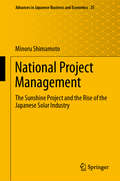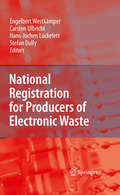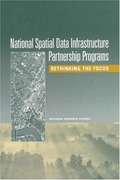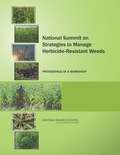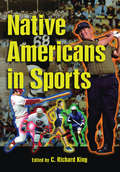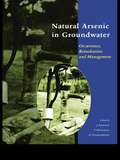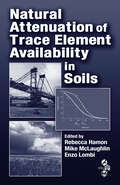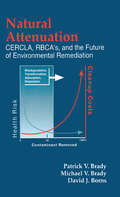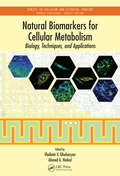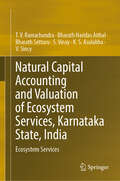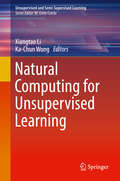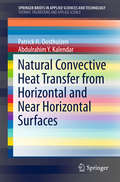- Table View
- List View
National Geographic Little Kids First Big Book of Space (National Geographic Little Kids First Big Books)
by Catherine D. HughesGet ready to blast off on an outer space adventure! Featuring stunning illustrations and engaging interactivity, this reference book will tap into 4-to-8-year-olds' curiosity about everything under the sun and beyond.This beautiful book is the latest addition to the National Geographic Little Kids First Big Book series. These colorful pages will introduce young children to the wonders of space, with out-of-this-world illustrations by David Aguilar and simple text that is perfect for beginning readers or for reading aloud. The book will explain basic concepts of space, beginning with what is most familiar to kids and expanding out into the universe.Chapters include: • Chapter 1 focuses on the Earth, moon, and sun. • Chapter 2 introduces kids to the other planets in our solar system. • Chapter 3 explains other objects in our solar system, such as dwarf planets, comets, and asteroid belts. • Chapter 4 voyages even farther afield, touching on concepts such as the universe, the Milky Way, stars, galaxies, and black holes. • The last chapter delves into space exploration: humans on the moon, spaceships, the International Space Station, etc.
National Geographic Photo Basics: The Ultimate Beginner's Guide to Great Photography
by Joel SartoreFor digital camera and smartphone users, this easy how-to guide, written by an experienced National Geographic photographer, imparts the essentials of taking great pictures. <p><p>This entertaining book from beloved National Geographic photographer and Photo Ark founder Joel Sartore shows aspiring photographers how to take great pictures, from framing and F-stops to editing and archiving. Whether you're using your phone or a DSLR camera, you'll learn the fundamentals of photography--and how to put them to work every day.
National Project Management: The Sunshine Project and the Rise of the Japanese Solar Industry (Advances in Japanese Business and Economics #25)
by Minoru ShimamotoThis book clarifies the challenges and outcomes of the Sunshine Project, a national project in Japan for developing new energy that was launched about 40 years ago at the time of the first oil crisis in the early 1970s and ended, as planned, in the early 2000s. The Sunshine Project was the government’s national project for developing new energy technologies such as solar energy and other natural energy sources—what we call renewable energy today. The book considers why policies were successful in some areas but did not have the intended effect in other areas. It explains how technology innovation was employed to achieve energy policy goals and to tackle environmental issues. If we can present suggestions for how to structure national projects, it may also be possible to identify ways for industry, government, and academia to come together to find solutions not only to environmental energy problems, but also to other social problems. Herein lies the goal of this book. Although the development of new energy is the main subject of the book, the author also scrutinizes the governmental decision-making process involved in planning policy, the creative process, and the design of systems of collaboration between industry, government, and academia as well as cases where corporations have developed commercial versions of new energy products. The main part of the book consists of three case studies interspersed with two reflective chapters. The first case study describes the Sunshine Project from the perspective of project management based on the perspective of government. The second case study is a detailed examination of the routines in all organizations, whether industry, government, or academia, and of the autonomy of the project organization. The third case study increases the degree of detail to focus on the smallest unit of analysis, the intentions and motivations of key individuals participating in the project.
National Registration for Producers of Electronic Waste
by Hans-Jochen Lückefett Engelbert Westkämper Stefan Dully Carsten UlbrichtNew directives in the European Union forced the national governments to release new laws on the collection and recycling of electronic waste. Producers of electrical/electronic equipment are now required to fulfill several tasks on an administrational level, such as registration and regular declarations, as well as ensure take back and recycling operationally. The national laws and requirements strongly differ from country to country and created a lot of confusion in the past. In this book, consultants from 26 EU member states give a clear and structured recipe how this complicated procedure can be done in the corresponding country. This makes the book being an essential tool for the electrics industry, in particular for international companies.
National Science Education Standards
by National Research Council StaffAmericans agree that our students urgently need better science education. But what should they be expected to know and be able to do? Can the same expectations be applied across our diverse society? These and other fundamental issues are addressed in National Science Education Standards--a landmark development effort that reflects the contributions of thousands of teachers, scientists, science educators, and other experts across the country. The National Science Education Standards offer a coherent vision of what it means to be scientifically literate, describing what all students regardless of background or circumstance should understand and be able to do at different grade levels in various science categories. The standards address: The exemplary practice of science teaching that provides students with experiences that enable them to achieve scientific literacy. Criteria for assessing and analyzing students' attainments in science and the learning opportunities that school science programs afford. The nature and design of the school and district science program. The support and resources needed for students to learn science. These standards reflect the principles that learning science is an inquiry-based process, that science in schools should reflect the intellectual traditions of contemporary science, and that all Americans have a role in improving science education. This document will be invaluable to education policymakers, school system administrators, teacher educators, individual teachers, and concerned parents.
National Spatial Data Infrastructure Partnership Programs: Rethinking the Focus
by National Research CouncilThe National Academies Press (NAP)--publisher for the National Academies--publishes more than 200 books a year offering the most authoritative views, definitive information, and groundbreaking recommendations on a wide range of topics in science, engineering, and health. Our books are unique in that they are authored by the nation's leading experts in every scientific field.
National Summit on Strategies to Manage Herbicide-Resistant Weeds: Proceedings of a Symposium
by Planning Committee for a National Summit on Strategies to Manage Herbicide-Resistant WeedsPreserving the efficacy of herbicides and of herbicide-resistance technology depends on awareness of the increasing resistance of weeds to herbicides used in agriculture and coordinated action to address the problem by individuals at the farm level and beyond. This summit served as a venue to bring the attention of important stakeholders to the issue and as an opportunity for experts from diverse disciplines to strategize in a coordinated way to address herbicide-resistant weeds. In convening stakeholders for this event, participants took a step toward a recommendation from the 2010 National Research Council report The Impact of Genetically Engineered Crops on Farm Sustainability in the United States that federal and state government agencies, private-sector technology developers, universities, farmer organizations, and other relevant stakeholders collaborate to document emerging weed-resistance problems and to develop cost-effective resistance-management programs and practices that preserve effective weed control. The summit provided the opportunity for stakeholders to explore the scientific basis of the emergence of herbicide resistance and to consider different perspectives on both opportunities and barriers to overcoming the problem of herbicide-resistant weeds. National Summit on Strategies to Manage Herbicide-Resistant Weeds contains a brief synopsis of key points made by each speaker at the summit.
National Taxation for Property Management and Valuation
by A Macleary A. MaclearyA clear and up-to-date guide to the UK tax system for surveyors and valuers which demonstrates land valuation for taxation purposes.
Native Americans in Sports: African Americans In Sports
by C. Richard KingOffers full coverage of Native American athletes and athletics from historical, cultual and indigenous perspectives, from before European intervention to the 21st century. There are entries devoted to broader cultural themes, and how these affect and are affected by the sport.
Native Crops in Latin America: Biochemical, Processing, and Nutraceutical Aspects (Food Biotechnology and Engineering)
by Mabel Cristina Tomás Ritva Repo-Carrasco-ValenciaFunctional foods improve health and can reduce the risk of different diseases. In this sense, a variety of bioactive compounds present in functional foods are able to modulate inflammatory responses or exhibit interesting bioactivities such as antihypertensive, antioxidants, anticancer, antimicrobials, anticariogenics, among others. There is a revalorization and mounting characterization on ancient grain crops of Latin America such as chia, amaranth, quinoa, Andean lupin, sacha inchi. This area also posseses a huge variety of native fruits such as camu camu, goldenberry, lucuma, which have health-promoting compounds. Native Crops in Latin America: Biochemical, Processing, and Nutraceutical Aspects explores recent investigations related to the potential use of the native crops as sources of bioactive compounds (proteins, hydrolysates, peptides, antioxidants, essential lipids, dietary fiber, pre- and probiotics) and as ingredients in functional foods. Key Features: Contributes to increasing knowledge of Latin American crops Contains information of various native crops and nutraceutical potentiality Discusses characterization of their by-products Explores revaluation and food application for enrichment food matrices This book contains recent findings impacting research in subjects such as cardiovascular and gastrointestinal systems, gut microbiota, delivery systems, product development, and gastronomy. Such information on Latin American crops may significantly influence the well-being, health, and nutrition of consumers. This will be a useful resource for food scientists, food technologists, nutritionists, ingredient manufacturers, and health care professionals, and relevent knowledge for any University’s Food Science department. Also available in the Food Biotechnology and Engineering series: Volatile Compounds Formation in Specialty Beverages, edited by Felipe Richter Reis and Caroline Mongruel Eleutério dos Santos (ISBN: 9780367631901) For a complete list of books in this series, please visit our website at: https://www.routledge.com/Food-Biotechnology-and-Engineering/book-series/CRCFOOBIOENG
Natural Additives in Foods
by German Ayala ValenciaAdditives have been used in the food sector for centuries, aiming to maintain or improve food quality in terms of freshness, appearance, texture and taste. Most food additives are synthetic chemical compounds classified as antioxidants, antimicrobials, colorants and sweeteners. In the last decades, several synthetic food additives have been correlated with adverse reactions in humans, which has caused the safety of synthetic food additives to be reviewed and discussed by international organizations. At the same time, there is increasing consumer demand for more natural and environmentally friendly food products and additives. Therefore, synthetic food additives have been replaced with natural food additives. Although the use of natural additives is a hot topic in food science, to date no book has systematically reviewed the application of natural additives in food products. Natural additives in foods presents an exhaustive analysis of the most recent advances in the application of natural additives in the food sector. Covering natural antioxidants, antimicrobials, colorants and sweeteners, this text also focuses on unconventional sources of natural additives, valorization and toxicological aspects, consumer attitudes and regulatory aspects. The main applications of natural antioxidants are fully covered, including polyphenols, ascorbic acid, carotenoids, tocopherols and proteins. Natural antimicrobial applications from polyphenols and essential oils to poly-L-Lysine are analyzed, as are natural colorants like anthocyanins, annatto, betalains and paprika. The encapsulation, trapping, and adsorption of natural additives are studied, and consumer perceptions and preferences are major focuses. Researchers will find up-to-date regulatory specifics for the United States and European Union.For any researcher in need of an expansive single source containing all relevant and updated information for the use of natural additives in foods, this book is a much needed addition to the field.
Natural Arsenic in Groundwater: Proceedings of the Pre-Congress Workshop "Natural Arsenic in Groundwater", 32nd International Geological Congress, Florence, Italy, 18-19 August 2004
by Jochen Bundschuh D. Chandrasekharam Prosun BhattacharyaArsenic contamination has become a global phenomenon. With the development of advanced technological detection tools, more geographical areas have been identified. The people most affected are those in the poorer socio-economic groups. The research articles in this book have been contributed by scientists working in areas severely a
Natural Attenuation of Trace Element Availability in Soils
by Mike McLaughlin Enzo Lombi Rebecca HamonUnderstanding attenuation processes is important not only for predicting the behavior of contaminants in soil and formulating remediation strategies, but also for mitigating and enhancing the availability of micronutrients in soil for agricultural applications. Natural Attenuation of Trace Element Availability in Soils brings together pioneering re
Natural Attenuation: CERCLA, RBCAs, and the Future of Environmental Remediation
by Patrick V. Brady Michael V. Brady David J. BornsNatural Attenuation: CERCLA, RBCAs, and the Future of Environmental Remediation presents the concept of "natural attenuation"-the tendency of soils to severly limit the toxicity of many types of hazardous waste. It reviews and updates the most recent findings from the field and lab and shows how natural attenuation is rapidly changing the direction and focus of environmental remediation. Outlining the legal and regulatory framework that has made waste remediation so costly, this book shows how applying an understanding of natural attenuation can decrease cleanup outlays while lowering risks to human health. Natural Attenuation: CERCLA, RBCAs, and the Future of Environmental Remediation makes it clear why natural attenuation will be relied upon more and more in the future.
Natural Beekeeping: Organic Approaches to Modern Apiculture
by Ross ConradWhether you are a novice looking to get started with bees, an experienced apiculturist looking for ideas to develop an integrated pest-management approach, or someone who wants to sell honey at a premium price, this is the book you&’ve been waiting for.Now revised and updated with new resources and including full-color photos throughout, Natural Beekeeping offers all the latest information in a book that has already proven invaluable for organic beekeepers. The new edition offers the same holistic, sensible alternative to conventional chemical practices with a program of natural hive management, but offers new sections on a wide range of subjects, including:The basics of bee biology and anatomyUrban beekeepingIdentifying and working with queensParasitic mite controlHive diseasesAlso, a completely new chapter on marketing provides valuable advice for anyone who intends to sell a wide range of hive products.Other chapters include:Hive ManagementGenetics and BreedingThe Honey HarvestThe Future of Organic BeekeepingRoss Conrad brings together the best &“do no harm&” strategies for keeping honeybees healthy and productive with nontoxic methods of controlling mites; eliminating American foulbrood disease without the use of antibiotics; selective breeding for naturally resistant bees; and many other detailed management techniques, which are covered in a thoughtful, matter-of-fact way.
Natural Bioactive Products in Sustainable Agriculture
by Joginder Singh Ajar Nath YadavThis book discusses various aspects of bioactive natural products employed in the agrochemical and agriculture sectors. It covers the use of plants, microorganisms, and microbial metabolites as eco-friendly, cost-effective, and sustainable alternatives to chemicals in the field of agriculture. Written by active researchers and academics, the book highlights state-of-art products in the field, as well as the gaps, challenges, and obstacles associated with the use of plants, microbes and their products. Given its scope, it is a valuable resource for the scientific community and professionals in enterprises wanting insights into the latest developments and advances in the context of biological products, including their applications, traditional uses, modern practices, and strategies to harness their full potential.
Natural Biomarkers for Cellular Metabolism: Biology, Techniques, and Applications (Series in Cellular and Clinical Imaging)
by Vladimir V. Ghukasyan Ahmed A. HeikalFrom the Lab to Clinical Settings-Advances in Quantitative, Noninvasive Optical DiagnosticsNoninvasive fluorescence imaging techniques, novel fluorescent labels, and natural biomarkers are revolutionizing our knowledge of cellular processes, signaling and metabolic pathways, the underlying mechanisms for health problems, and the identification of n
Natural Capital Accounting and Valuation of Ecosystem Services, Karnataka State, India: Ecosystem Services
by T.V. Ramachandra Bharath Haridas Aithal Bharath Setturu S. Vinay K.S. Asulabha V. SincyThis book describes the valuation of services of ecosystems (forests, agriculture and aquatic) for Karnataka State, India, as per the validated statistical framework for natural capital accounting – SEEA: System of Environmental-Economic Accounting (SEEA.un.org). According to SEEA protocol, ecosystem services are defined as the contributions of ecosystems to the benefits that are used in economic and other human activities. The valuation of ecosystem services (VES) provides an unbiased framework to value unaccounted ecosystem benefits and helps in developing meaningful policy interventions. The approach allows for adjusted regional or national accounts which reflect the output of ecosystem services as well as the depletion of natural resources and the degradation costs (externalized costs of the loss of ecosystem services) of ecosystems in economic terms. In this perspective, the current publication, focusing on the natural capital accounting and valuation of ecosystem services in Karnataka, India, can help raise awareness and provide a quantitative tool to evaluate the sustainability of policies. The book would aid as knowledge base for many professionals, institutions and government agencies taking up the task of natural capital accounting and valuation of ecosystem services across the countries worldwide.
Natural Colorants for Food and Nutraceutical Uses
by Octavio Paredes-Lopez Francisco Delgado-VargasAs our understanding of the science and functions of color in food has increased, the preferred colorants, forms of use, and legislation regulating their uses have also changed. Natural Colorants for Food and Nutraceutical Uses reflects the current tendency to use natural pigments. It details their science, technology, and applications as well as t
Natural Computing for Unsupervised Learning (Unsupervised and Semi-Supervised Learning)
by Ka-Chun Wong Xiangtao LiThis book highlights recent research advances in unsupervised learning using natural computing techniques such as artificial neural networks, evolutionary algorithms, swarm intelligence, artificial immune systems, artificial life, quantum computing, DNA computing, and others. The book also includes information on the use of natural computing techniques for unsupervised learning tasks. It features several trending topics, such as big data scalability, wireless network analysis, engineering optimization, social media, and complex network analytics. It shows how these applications have triggered a number of new natural computing techniques to improve the performance of unsupervised learning methods. With this book, the readers can easily capture new advances in this area with systematic understanding of the scope in depth. Readers can rapidly explore new methods and new applications at the junction between natural computing and unsupervised learning. Includes advances on unsupervised learning using natural computing techniquesReports on topics in emerging areas such as evolutionary multi-objective unsupervised learning Features natural computing techniques such as evolutionary multi-objective algorithms and many-objective swarm intelligence algorithms
Natural Convection from Circular Cylinders
by Sandra K. S. BoetcherThis book presents a concise, yet thorough, reference for all heat transfer coefficient correlations and data for all types of cylinders: vertical, horizontal, and inclined. This book covers all natural convection heat transfer laws for vertical and inclined cylinders and is an excellent resource for engineers working in the area of heat transfer engineering.
Natural Convection in Superposed Fluid-Porous Layers
by Francis A. Kulacki Aniruddha BagchiNatural Convection in Composite Fluid-Porous Domains provides a timely overview of the current state of understanding on the phenomenon of convection in composite fluid-porous layers. Natural convection in horizontal fluid-porous layers has received renewed attention because of engineering problems such as post-accident cooling of nuclear reactors, contaminant transport in groundwater, and convection in fibrous insulation systems. Because applications of the problem span many scientific domains, the book serves as a valuable resource for a wide audience.
Natural Convective Heat Transfer from Horizontal and Near Horizontal Surfaces (SpringerBriefs in Applied Sciences and Technology)
by Patrick H. Oosthuizen Abdulrahim Y. KalendarThis book deals with a natural convective heat transfer situation of significant practical importance that has not been adequately dealt with in existing texts or widely available review papers: natural convective heat transfer from horizontal and near horizontal surfaces. The aim is to provide the reader with an understanding of past studies of natural convective heat transfer from horizontal surfaces and a more detailed review of contemporary studies. The more recent work deals with heat transfer from surfaces that have more complex shapes than previously considered, with heat transfer in situations in which laminar, transitional, and turbulent flow occur; in situations where the surface is inclined at a relatively small angle to the horizontal; and in situations where there is a covering surface above the heated surface. The authors further present methods for predicting heat transfer rates in all of the situations.
Natural Convective Heat Transfer from Narrow Plates
by Patrick H. Oosthuizen Abdulrahim KalendarNatural Convective Heat Transfer from Narrow Plates deals with a heat transfer situation that is of significant practical importance but which is not adequately dealt with in any existing textbooks or in any widely available review papers. The aim of the book is to introduce the reader to recent studies of natural convection from narrow plates including the effects of plate edge conditions, plate inclination, thermal conditions at the plate surface and interaction of the flows over adjacent plates. Both numerical and experimental studies are discussed and correlation equations based on the results of these studies are reviewed.
Natural Convective Heat Transfer from Short Inclined Cylinders
by Patrick H. Oosthuizen Abdulrahim Y. KalendarNatural Convective Heat Transfer from Short Inclined Cylinders examines a heat transfer situation of significant, practical importance not adequately dealt with in existing textbooks or in any widely available review papers. Specifically, the book introduces the reader to recent studies of natural convection from short cylinders mounted on a flat insulated base where there is an "exposed" upper surface. The author considers the effects of the cylinder cross-sectional shape, the cylinder inclination angle, and the length-to-cross sectional size of the cylinder. Both numerical and experimental studies are discussed and correlation equations based on the results of these studies are reviewed. This book is ideal for professionals involved with thermal management and related systems, researchers, and graduate students in the field of natural convective heat transfer, instructors in graduate level courses in convective heat transfer.


